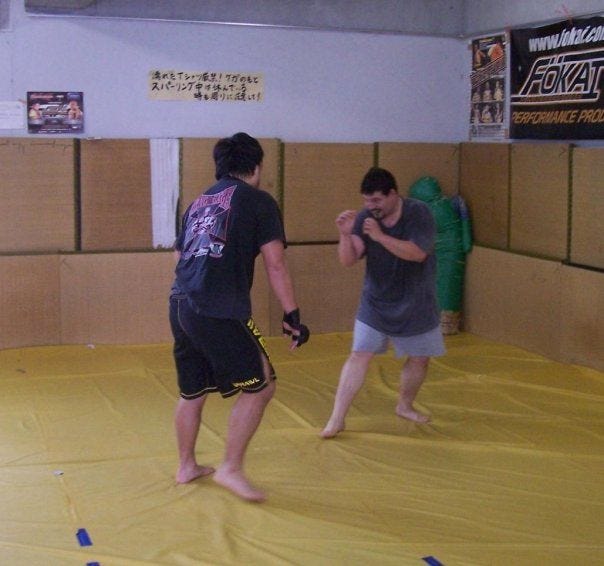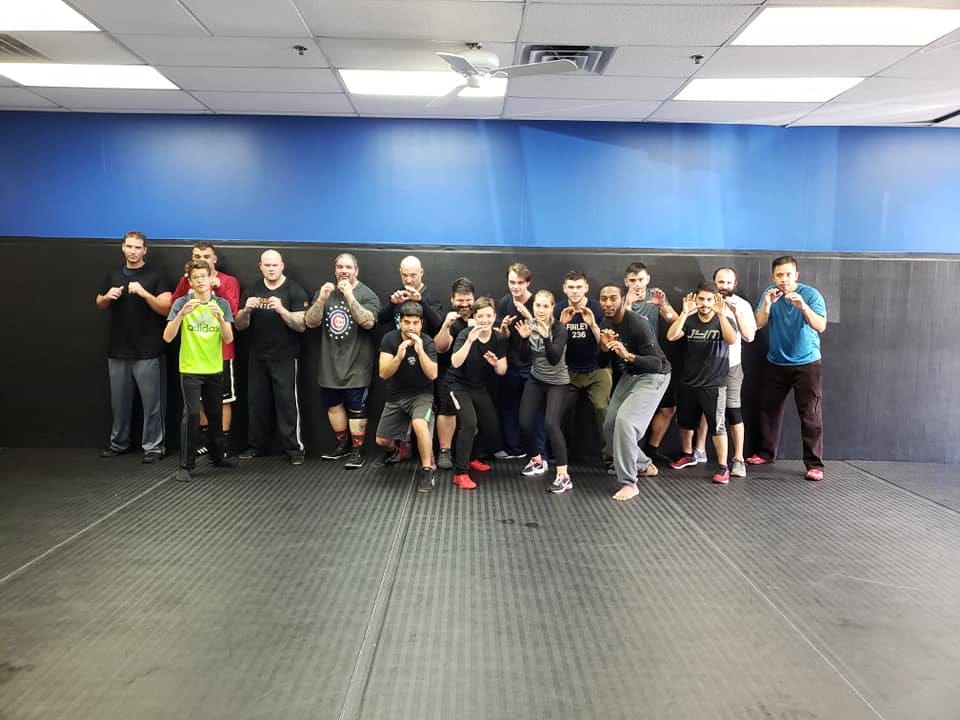5 died in a terrorist attack inspired by hate. Kelly Loving. Daniel Aston. Derrick Rump. Raymond Green Vance. Ashley Green Paugh.
The patrons of Club Q took down the shooter without arms. According to this interview with Richard Fierro, he was able to tackle the killer and disarm him. A trans woman (who was not named in the article) assisted by retrieving the fallen rifle and stomping the killer with her heels. Fierro was trained in combat, but many people who have faced down armed terrorists were not. School teachers. School children. People like to talk about “what they would do,” but frankly, they don’t know unless they’ve been there.1 To quote a shirt sold by the brewery Fierro runs with his wife, “Intentions Don’t Change Anything—Actions Do.”
In my many years on the internet—thirty-four, to be exact—some of the most vehement arguments have been about self-defense. Because this discussion can include the topic of firearms, it often veers immediately off-course.2 Let’s leave gun ownership out of this conversation, for now.
I will repeat what I've been saying since November 9th, 2019: if you have ever wanted to train in self defense of any kind, find like-minded people and do so. It's become politicized like everything else, but there are people like you doing it, and you won't regret finding them and learning together. You don't just learn a martial art, you learn yourself.
“Martial Arts” is such a loaded term; the arts of war. When simply put, they are a life skill. They don’t have to involve hitting boards, or people for that matter. The best thing a boxer learns is how not to get hit. If you ever meet a pro boxer, try to touch them. (I would ask first.) The slip is their biggest weapon. And a Quaker could train it. Bouncers learn to observe people and sense impending violence. People who’ve been abused do, too. But there is a way to learn awareness, from experienced teachers, without having to endure abuse or hemorrhoids from sitting on a stool checking IDs for hours on end. My niece has been training in Krav Maga since she was six. She just turned ten, hasn’t beat up any classmates, and she can hit me hard enough to hurt. And she sure as heck knows how to wriggle out of a hold and run like hell.
If you’ve read my essay That Time I Got Beat Up, you’ll know that I am very enthusiastic about self-defense. In my thirties, I went from the kid who sat down in right field like Ferdinand the Bull under his cork tree—because athletics were boring, and dug into my daydreaming time—to a full-on mat rat, training at Advanced Fighting Systems under Phil Dunlap, who fought bareknuckle in Burma. I went from walking around in fear, to having a well-tuned sense of awareness and well-tested self-confidence. There is a big difference between training in defense and training in a fight sport like karate; there is a further, and critical difference between defense, which teaches awareness, and the Fear Industry, which exists to sell you Magical Talismans and keep you afraid.3
But let me nerd out about Phil for a bit. He currently teaches at White Rhino in Lexington, Virginia. Phil teaches Burmese forms of striking and grappling known as lethwei, thaing, and naban, collectively called Kachin Bando, as this particular version of the style is practiced in the Jagun region of the Kachin state, specifically by the Jhingpaw indigenous tribe. They are best known from the Sinatra flick Never So Few, where Allied troops are working with them to fight the Japanese invaders. Most of the memoirs of soldiers from this theater are paternalistic, calling them “fierce little fighters,” or The Amiable Assassins, as one title suggests, because they were known for stealth and their ability with weapons such as the dha shortsword and khukuri, a large curved knife that is front-heavy and forceful as an axe.
A Burmese lethwei fight. Headbutts are legal:
That was what led me to Phil; my high school friend Peter Dell’Orto—who now writes for Steve Jackson Games—learned about the Nepalese Ghurkas in our Dungeons & Dragons studies. Some book had a khukuri (or kukri) and it looked cool, so we read up on Ghurkas, and they were also patronized by their colonizers, the British, and praised for their fierceness in battle with all sorts of hyperbole and condescension. No, you don’t have to draw blood if you remove your kukri from its sheath, and Ghurkas don’t lead suicide charges, that’s just a colonizer assigning “savage” attributes to the people they’ve oppressed.4 But that’s a whole another tangent, and I’ve gone on two already, so let me get back to self-defense training.
What do you think of when I say “self-defense class?”
I imagine it looks like the goofballs I saw on YouTube just now: some white guy who watched a lot of kung fu movies; racists who want you to be afraid; fearful people who believe in preemptive violence, or escalating situations into conflict, rather than avoiding it. And that’s not even mentioning all the frauds who fall under the delightful moniker of “bullshido,” who believe their chi can make people faint, that they can levitate, or that knives can be easily deflected in close combat. I sometimes wonder how many people they get killed by spreading their misinformation.
They are out there, and they have poisoned the well of any discussion about protection. If you want to find a good place to train, you have to look for people who aren’t there to flex their machismo or build a cult of personality.
Because a good class is like any other group activity where you click. You make friends from all kinds of backgrounds, you learn, you teach, you struggle, you improve. If there’s something you’re afraid of, like the runner I knew who had been attacked by someone who grabbed their ponytail, you can train that exact situation. If you’re like me, someone who walked around with their head in the clouds, you can learn awareness. And instead of collecting pocket knives and tactical junk, you can learn that the best defensive device is a pair of shoes you can run in.
I’m not here to give training advice. Sometimes you just can’t avoid an attack. But preparing for one doesn’t mean living in fear.
It should be a choice. And not one taken lightly.
If you want to defend yourself—or other people—from harm, I think you should train to do so.
And if you don’t want to, that’s fine too. If you get hurt by someone, I would not say “I told you so.” It is never the victim’s fault.5
From personal experience, if you are feeling afraid—whether of random violence, or because of the growing threat of domestic terrorists who want to kill you because of your very existence—training in defense with the right people can help assuage some of that fear, and give you a sense of agency in a world where you have little control. And you won’t even have to punch someone in the face, unless you want to.
There is a difference between pacifism and turning the other cheek. If Jesus had trained to box, he could slip that punch and dance around the Roman centurion trying to slap him upside the head, and never strike his assailant in return. You can also train in aikido or judo, if you only want to use the attacker’s violence against them, but make sure you vet the trainer; those are sports, and their moves can be used in defense.6
I wish good defense training was easier to access for more people. It should be apart from school, work, or whatever other groups you have in your life. Because the right place will engender its own camaraderie. The ideal school is diverse, inclusive, serious but adaptable, and professional but friendly. That’s a lot to ask, isn’t it? The best way to find these places is through word of mouth, so if it’s something you are interested in, talk about it. You’ll get a lot of terrible recommendations—like the adult school class held in a church basement by the guy who looks like Jim Jones.
I also wish that all fighting was a sport, like both pro-wrestling and Olympic wrestling, Paintball, and Medieval Times. But that is not our reality. Training with a group of friendly people—to spot trouble, and defend against what you can’t avoid or deescalate—may not make you act and save lives like Richard Fierro and the as yet unnamed trans woman did. May you never be in that situation. But if you train for it—and at Rock Solid Krav Maga, we did charge people holding unloaded firearms, to see what angles were the most effective approach, and how to disarm—and you never get to use it, well, you made a lot of friends, got in better shape, and had a lot of fun for nothing.
And to see that us dojo dingbats also have a lot of fun, watch this one:
And I have not. But I know I can walk into danger when I am scared, I’ve done that many times.
For example, the Libertarian Party had a seasoned debate in 1991 over private ownership of nuclear weapons.
The gun industry is a part of that. A gun won’t save you. Training might. A firearm might be part of your defense training, but it does not need to be. But if you own a gun, I hope you train to use it.
Like this cringe-worthy article about an elderly veteran who committed suicide, for example. If your 90-year-old American neighbor killed himself after his wife died, would you say, “Ah, just like a Marine.”? No.
Unless you are one of those tough guys who shoves his way through a crowd of young men because he doesn’t want to step around them, and then calls himself a “victim.” There seem to be a lot of them on the internet.
Same with boxing. Great footwork and punches, but if I had to fight a boxer, I’d lead with leg kicks, for which they do not train. Kickboxers are pretty well-balanced, if they spar a lot. And wrestlers will mess you up.






"you can learn that the best defensive device is a pair of shoes you can run in"
When I was younger and left the house more often, I'd always run up and down aisles in stores when trying on shoes to make sure I could run in them (including heels). Most of my shoes in my 20s had straps or were easy to kick off for this reason.
Thanks for the great info!